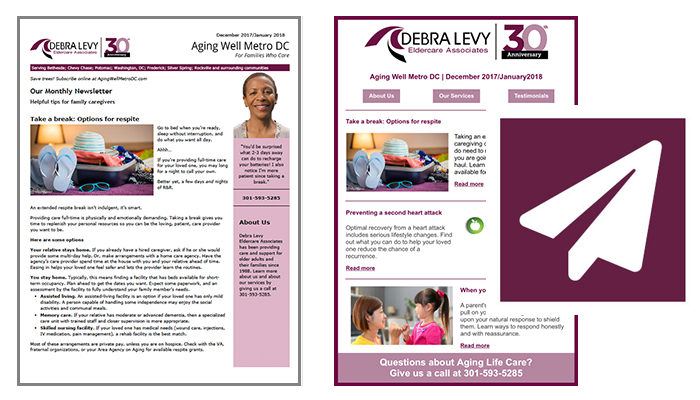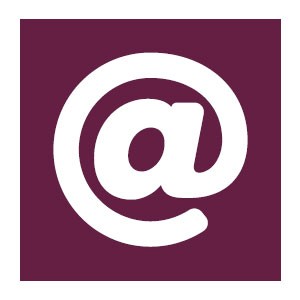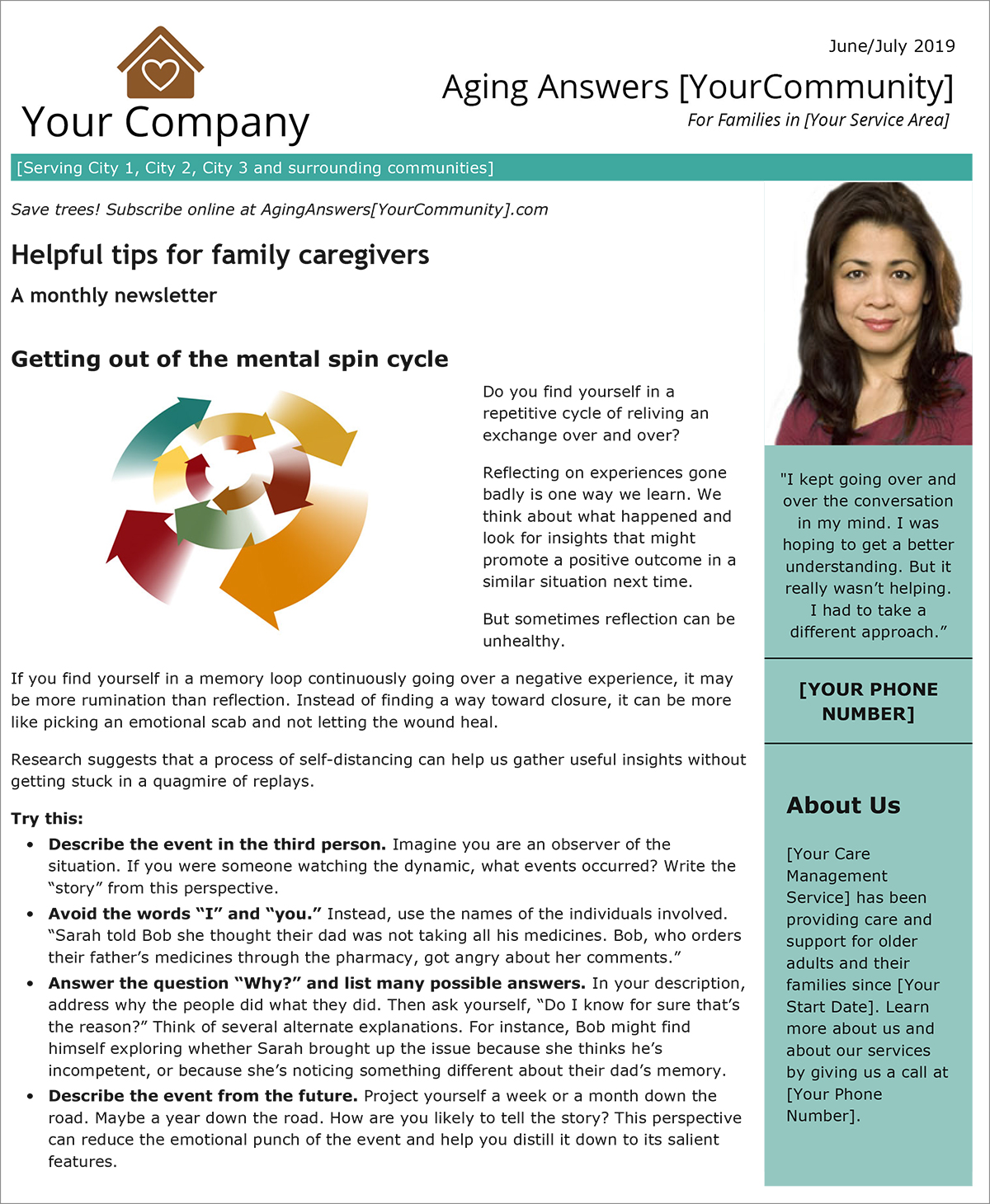
In my previous blogpost I wrote about the pros and cons of blogging for eldercare businesses. This post concentrates on the newsletter side of the equation.
Newsletter advantages
There are many reasons you might choose to create a newsletter over a blog. The flexibility of its formats are hard to beat: print, email and online. And the two aren’t that different anymore. A blog may be weekly, but without the email and comment functions, there’s not much to functionally distinguish it from an online newsletter webpage.
Unless your blog is specifically a first-person subjective opinion piece, education-oriented blog posts can be assembled to great effect and published monthly as a newsletter. In that light, here are some advantages of a monthly newsletter:

Easy to email. If you are able to produce a .pdf file of your writing, you can include a newsletter along with any email communication. Or you can build a list of subscribers and send out an email announcement to hundreds or even thousands of people, with a link to the latest issue (as a .pdf or as an online version. People don’t like to read long articles actually in the email.) There is no doubt that email has impact. Whether the recipients actually open the message or not, 90% of the work is done just arriving in the inbox. Your email brings your brand back to mind and is a reminder of your company’s care and expertise!
Builds brand loyalty and name recognition. A newsletter typically comes out once a month. That’s a good interval for reminding prospects, referrers, and existing clients that you are available to assist with their eldercare challenges. Not too often. Not too far apart. It takes many repeated exposures for a person to even remember the name of your company. A monthly newsletter can help accomplish this for you.
Can be passed around in paper format. Sometimes good old-fashioned hard copy is the easiest way to spread the word. Plus your newsletter can be physically handed from one person to another (e.g., a client to a friend). And with your contact information on it, it’s as good as handing out your business card, perhaps even better. A print newsletter has a longer “shelf life” than its digital cousin because it is likely to stick around on a table, in a purse, or in a literature rack, reinforcing your brand much longer than a blog would.
Can help with social media. You can create a specific page of your website that becomes the newsletter page. Add to it like you would a blog and then post updates from Facebook and/or LinkedIn. You become acknowledged for your expertise. Plus, rather than sending people to educational material on the websites of others, you drive traffic from social platforms to your own commercial presence.
Newsletter (and e-newsletter) disadvantages
- Print is expensive. It costs money to format newsletters so they look professional. You also want to print them on nice paper. If you send them via snail mail, unless they are included with something else you would send anyway, postage is expensive too.
- You need to collect email addresses for an e-newsletter. That can be like pulling teeth these days. People are becoming rather protective of their inboxes.
- You need something like Mail Chimp or Constant Contact to get past the spam filters. If you are sending to large numbers of subscribers, you need a database that has strict anti-spam policies and works with the big Internet service providers to grease the skids so your emails stay out of junk mail.
- Too much competition inside the inbox. The information age has aimed a firehose at our inboxes. We receive a daily deluge we have to sort through (or simply delete as quickly as we can). Your customers and referrers are no different. Unless you have a compelling subject line, your message may get lost in the torrent.
Newsletter solutions
A newsletter provides flexibility of formats and has a reliable monthly touch that is hard to beat in terms of name recognition and brand loyalty.
- Print your newsletter in-house. Get a laser printer and use 28 lb. paper with a brightness of 100. This way you can print what you need on demand and you can print on both sides without bleed through. You wind up with the quality your business deserves without having to order several hundred newsletters ahead of time at a professional printer.
- Make it a priority to grow your list. Especially if you are new in business, you need to grow an email subscriber list. This is best done at educational presentations where you can gather 10-20 names and email addresses at a time. Religiously add new clients to the list (or their families, if your newsletter is speaking to family caregivers) and add new professional contacts.
- Manage your expectations. Think of your newsletter as the optimal follow-up to an in-person meeting. It may get you some initial attention sitting in a waiting room, but really it’s the inclusion in a patient or client packet, the follow-up to a presentation, or the monthly outreach to existing clients where it holds its greatest strength. Recall also that just because a recipient may not have opened an email, doesn’t mean they didn’t see your company name. An email message has done its name recognition and brand loyalty work if it lands in an inbox and generates an “Oh yes, [***your company name***]. They are so knowledgeable and caring!”
Our next post will offer compare blogs and newsletters head on and offer insights for which one makes the most sense depending on whether you are a care manager, a home care company, a hospice, a palliative care company, or a home health agency.
Want help with a monthly newsletter?
We work with 90 eldercare providers around the country. You receive an exclusive for your area. (None of your competitors can license our resources.) Check out our website to see if your market is still available. Or give us a call at 707-477-0700 (Pacific Time)





